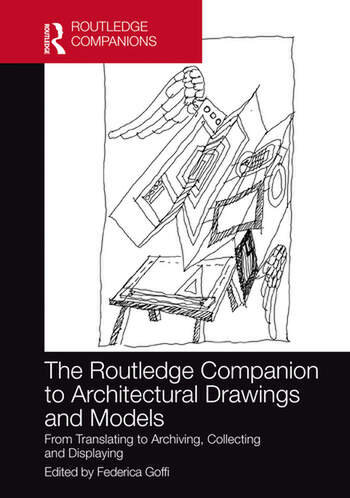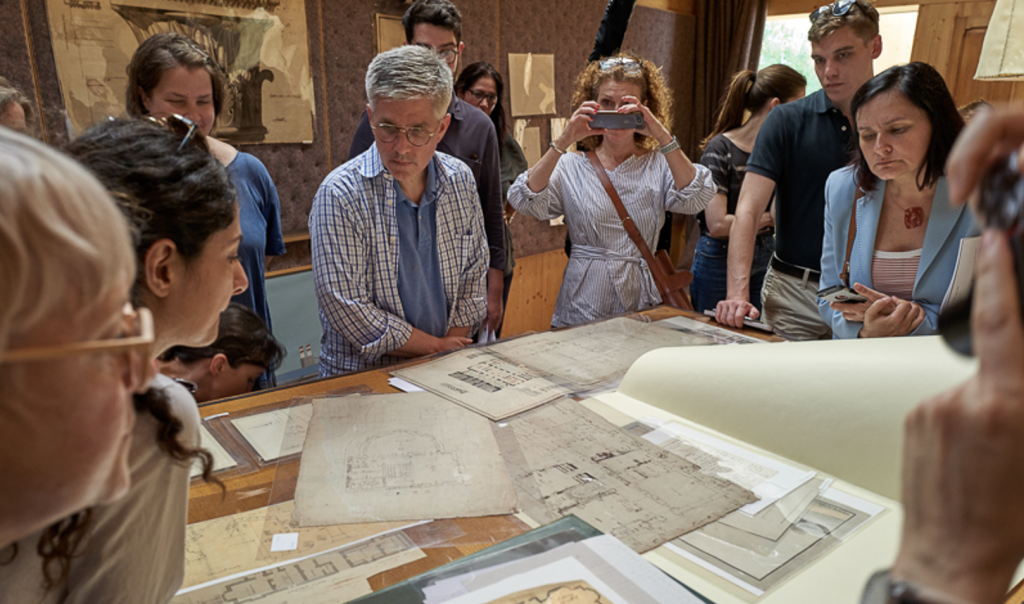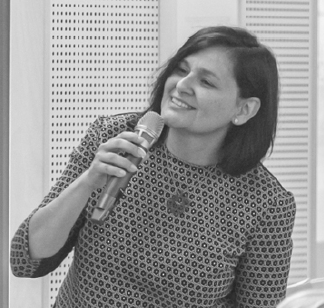New book on the archival of architecture media edited by Interim Director, Federica Goffi
June 7, 2022
The Routledge Companion to Architectural Drawings and Models: From Translating to Archiving, Collecting and Displaying, edited by Dr. Federica Goffi, Interim Director of the Azrieli School of Architecture & Urbanism, has been released by Routledge in London, UK, in May 2022.
The illustrated book draws attention to curatorial responsibilities in finding the proper placement for architecture collections and how accessibility, reproducibility, and promotion impact the cultural, economic, and socio-political role of architecture media.
“Architectural drawings and models are instruments of imagination, communication, and historical continuity,” Dr. Goffi says. “The role of drawings and models, their ownership, placement, and authorship in a ubiquitous digital age deserve careful consideration.”
The Routledge Companion questions the relevance of translations from place to place when mobile architecture media moves between offices, buildings, archives, exhibition spaces, and websites, questioning the ways in which mobile media generate a dynamic trans-mediated construction and construing, finding renewed significance over time.
Despite them being the first handiwork of the architect, not enough attention is given to discussions about the sites of drawing activity and, importantly, to the matter of housing them, says Dr. Goffi. This is essential to the active relations between drawings and building, not just before or during but also after construction.

The book features an introduction by Federica Goffi and the ideas and work of scholars as well as practitioners in the fields of architectural history and theory and curatorial practices, covering archival conditions of architecture media in 15 countries worldwide. The 36 contributions by 46 authors define recent research in four key areas:
– Drawing Sites/Sites of Knowledge Construction: Drawing, Office, Construction Site
– The Afterlife of Drawings and Models: Archiving, Collecting, Displaying, and Exhibiting
– Tools of Making: Architectural Representations and their Apparatus Over Time
– The Ethical Responsibilities of Collecting and Archiving: Authorship, Ownership, Copyrights, and Rights to Copy
The research delves into the practices of such architects as Sir John Soane, Robert Venturi and Denise Scott Brown, Superstudio, Viollet le-Duc, Frank Lloyd Wright, Wajiro Kon, Lina Bo Bardi, Germán Samper Gnecco, Alison + Peter Smithson, Mies van der Rohe, and Renzo Piano.

Figure 1: Drawing Matter archive, Somerset, UK, during an archival visit of the book contributors (June 2019). © Courtesy of Drawing Matter.
The book explores a range of archival typologies ranging from private to public, from office to archival and museum collections.
They include the Museum of Modern Art (NY); Avery Architectural and Fine Arts Library, Columbia University; Architectural Archives of the University of Pennsylvania Weitzman School of Design (Philadelphia); Drawing Matter Collections, (Somerset, UK) [Figure 1]; The Victoria and Albert Museum (London, UK); Bibliothèque nationale de France (Paris); Bibliothèque et Archives Canada (Ottawa); Centre Canadien d’Architecture (Montreal); Centro de Documentación de Arquitectura Latinoamericana (Buenos Aires); Fundación de Arquitectura Tapatía Luis Barragán (Mexico City); Escola Tècnica Superior d’Arquitectura de Barcelona (Spain); Casa de Arquitectura, (Lisbon); Swedish Museum of Architecture (Stockholm); Kon Wajiro Archive of Kogakuin University Library (Tokyo); Carlo Scarpa Archive at Castelvecchio Museum (Verona) [Figure 2]; Renzo Piano Building Workshop & Renzo Piano Foundation (Genoa, Italy), and many others.
Read the table of contents here.
Professor Goffi presented the book at the 8th edition of the international lecture series Mantovarchitettura, hosted by the Mantua campus of the Polytechnic University of Milan, in the context of the cultural activities organized by the UNESCO Chair in Architectural Preservation and Planning in World Heritage Cities.

Figure 2: Carlo Scarpa Archive. Castelvecchio Museum, Verona. © Photo courtesy of Prakash Patel.
Praise for the book
“In 1916, when the first architectural drawings from the recent past were brought in to lie beside Palladio and Jones at the RIBA, Halsey Ricardo spoke of the ‘pathetic eloquence’ with which they pictured a society, culture, and patterns of thought of a time just past. It is vital if such pictures are to be faithfully drawn, to explore the patterns of collection by which architectural drawings and models have been preserved; the differences between the archival discipline and the process of inquiry in examining them; and commonalities or divergences in characteristics of drawings that may derive from hundreds of thousands in a modern office, or the scarce fragments of a Renaissance studio or Enlightenment collector’s cabinet. Here is a scrupulously curated conversation that – perhaps for the first time – does just that.”
Nicholas Olsberg, Former Director, Canadian Centre for Architecture
“From tools of making to the documentation of built projects, drawings and models have long played a central role in the conceptual development of architectural projects. This momentous collection of essays brilliantly shows the development of the discipline by taking a new look at the traces left by the process of form generation and offers glimpses of the potential for action in the contemporary world. The scope of subjects and the breath of erudition makes this thought-provoking collection a must-read for anyone interested in the significance of architecture.”
Louise Pelletier, Director, Design Centre, University of Quebec in Montreal (UQAM)
“The archive has been a potent metaphor for scholars in recent decades, but this cornucopia of first-hand accounts insists on the archives as a physical site, one often deeply engaged in the politics of architecture and of reputations. A combination of oral history from those who have been at the helm of key collections and reflective texts on the very nature of architectural documents provides invitations for future historical work both for students launching a career and the most seasoned scholar alike.”
Barry Bergdoll, Meyer Shapiro Professor of Art History, Columbia University and former chief curator of Architecture and Design at the Museum of Modern Art, New York
About Federica Goffi

Federica Goffi is a Professor of Architecture, Interim Director and Co-Chair of the PhD and MAS program in architecture at the Azrieli School of Architecture & Urbanism at Carleton University.
She holds a PhD from Virginia Tech in Architecture and Design Research. She has published book chapters and journal articles on the threefold nature of time-weather-tempo.
Her book, Time Matter[s]: Invention and Re-imagination in Built Conservation: The Unfinished Drawing and Building of St. Peter’s in the Vatican, was published by Ashgate in 2013. In addition, she edited Marco Frascari’s Dream House: A Theory of Imagination (Routledge 2017), InterVIEWS: Insights and Introspection in Doctoral Research in Architecture (Routledge 2019), and co-edited Ceilings and Dreams: The Architecture of Levity (Routledge 2019).
She is guest editor of a special issue of the Routledge journal Architecture and Culture, titled And Yet It Moves: Ethics, Power and Politics in the Stories of Collecting, Archiving and Displaying of Architectural Drawings and Models (September 2021).
She holds a Dottore in Architettura from the University of Genoa, Italy. She is a licensed architect in her native country, Italy.